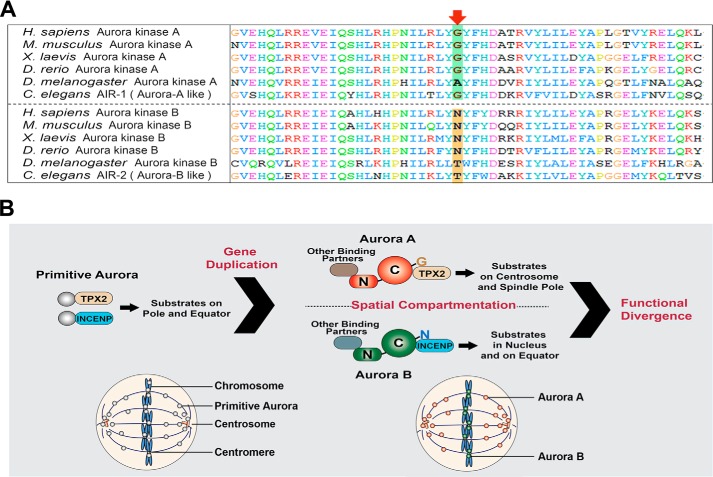FIGURE 7.
Model depicting the evolution process of Aurora kinases. A, the sequence alignment of a segment of the Auroras from various species showing the residue corresponding to Gly-198 of human Aurora A (Arrow) is divergent in polar Auroras (Aurora A like) and equatorial Auroras (Aurora B like). B, model depicting the evolution process of Aurora kinases. Primitive Aurora kinase is bifunctional and localized on both polar and equatorial regions of the cells. Gene duplication and divergence occurred independently in protostome and deuterostome. The divergence on the residue corresponding to Gly-198 of human Aurora A results in differential affinity to TPX2 and INCENP. The divergent N terminus along with the residue corresponding to Gly-198 of human Aurora A led to spatial differentiation of Aurora A and B and thus conferred further the functional divergence of the modern Auroras.

